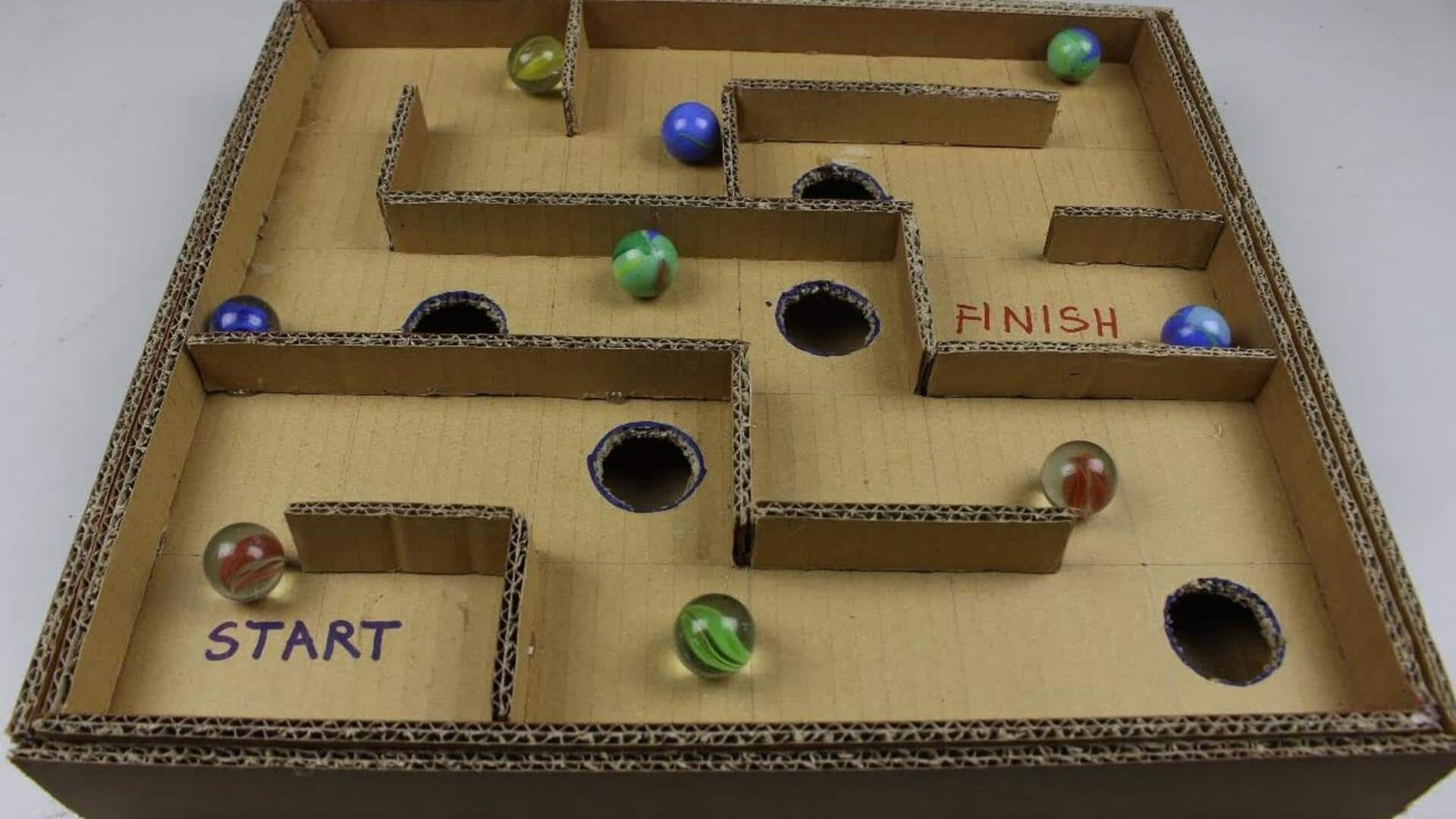
Marble mazes: Fun way to boost your kid's problem-solving skills
What's the story
Building a DIY marble maze is not just a fun-filled activity but also a great way to foster creativity, ingenious thinking, and problem-solving skills in kids.
This hands-on craft can be created using everyday items available at home, allowing children to design, build, and experiment with their own mazes.
It's a perfect way to teach physics and engineering concepts in an enjoyable manner while nurturing their artistic side.
Materials
Selecting the right materials
To start your DIY marble maze, choose a shallow box or tray for the base; shoeboxes work great.
For the maze walls, use straws, popsicle sticks, or even LEGO bricks.
Make sure the marble or small ball can fit through the paths.
Glue or tape materials down. This planning is crucial to build a working maze.
Planning
Designing your maze
Before diving into construction, have your child plan out their maze on paper.
This step fosters critical thinking as they map out the journey their marble will take from start to finish.
They can decide where to place obstacles or dead ends and determine how complex they want their maze to be.
This planning phase allows them to visualize their project and make adjustments before building begins.
Construction
Building the maze
Once their design is finalized, kids can start constructing their marble maze.
They'll place materials on the base, figuring out through trial and error the best way to attach each piece for maximum stability.
Prompting them to adjust their designs as they build promotes adaptability and problem-solving, as they learn what's most effective in ensuring a stable maze.
Experimentation
Testing and iteration
Once the maze is constructed, it's time for the fun part: testing!
Children can trial their mazes by rolling a marble through them from beginning to end, pinpointing any areas that may need tweaking like overly simple routes or insurmountable roadblocks.
Nudging kids to refine their designs based on these tests fosters perseverance and adaptability—crucial elements of an inventive mindset.
Engagement
Sharing and collaboration
By sharing their mazes with siblings or friends, children can receive further testing and feedback on their designs.
This collaborative process brings in fresh perspectives, sparking new ideas for adjustments or even entirely new designs.
Plus, sharing their creations helps children develop communication skills and encourages teamwork through collective problem-solving.